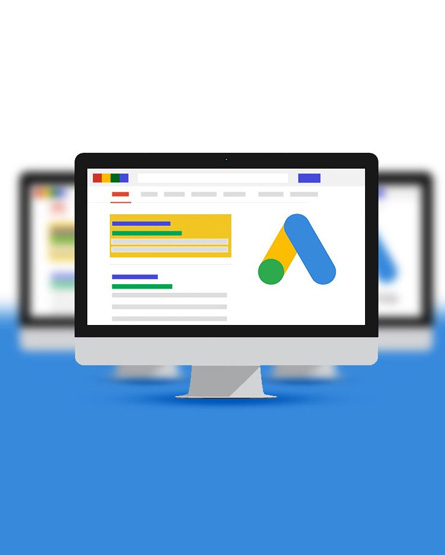I hope you enjoy reading this blog post.
If you want to get more traffic, Contact Us

Click Here - Free 30-Minute Strategy Session
Be quick! FREE spots are almost gone for this Month. Free Quote

For businesses aiming to amplify their revenue, Google Ads serves as a vital tool to scale effectively. The journey from $15K to $150K in monthly revenue begins with understanding how to optimise ad campaigns for consistent performance. By focusing on refining audience targeting, improving ad quality, and managing budgets strategically, companies can unlock significant growth potential.
Crafting high-performing ads requires aligning keyword strategies with customer intent and leveraging data-driven insights to minimise wasted spend. Businesses must also analyse competition trends and adopt metrics like Cost Per Acquisition (CPA) and Return on Ad Spend (ROAS) to fine-tune campaigns. Overcoming inefficiencies hinges on using automation tools, A/B testing, and ongoing optimisation practices. Ultimately, consistent improvement transforms spending into measurable profits.

Click Here – Free 30-Minute Strategy Session
Be quick! FREE spots are almost gone for this Month
At the $15K monthly revenue mark, businesses often face a growth plateau that stems from several limiting factors. Challenges in scaling Google Ads campaigns prominently include improper ad targeting, limited audience segmentation, and insufficient budget allocation. Over-reliance on broad match keywords and lack of optimisation for key performance indicators can hinder meaningful progress. Additionally, inconsistent ad messaging and failure to refine landing pages contribute to low conversion rates.
Many advertisers are constrained by outdated strategies and unclear data insights. Identifying and overcoming these barriers requires precise analytics to pinpoint inefficiencies and develop actionable improvement strategies for unlocking growth potential.
A comprehensive evaluation of current Google Ads strategies is critical for scaling revenue effectively. This process involves reviewing the structure of campaigns, identifying active ad groups, and analysing keyword performance. Factors such as audience segmentation, geographic targeting, and bid adjustments should be assessed to ensure optimal targeting.
Ad extensions, such as sitelinks and callouts, should be monitored for contribution to click-through rates. Conversion tracking tools must be examined to verify accurate data collection. Additionally, performance metrics like impression share, cost-per-click, and return on ad spend provide valuable insights into campaign efficiency. Insights from this analysis can uncover optimisation opportunities and inefficiencies.
Developing a targeted strategy is pivotal in transforming Google Ads campaigns into revenue-generating tools. Businesses must first identify their audience’s unique behaviours and preferences, segmenting them into clearly defined groups to address their needs effectively. Selecting ad formats that resonate with the audience, such as search, display, or shopping ads, enhances engagement.
A data-driven approach, using Google Analytics and performance insights, optimises ad delivery for better results. Businesses need to refine keywords, bidding strategies, and geographic targeting consistently. Leveraging A/B testing ensures better message alignment, while competitor analysis pinpoints unique selling propositions.
Keyword optimisation stands as a crucial pillar in successful Google Ads campaigns. By identifying high-intent keywords aligned with user search behaviour, advertisers can target audiences effectively. Thorough research ensures relevancy, enabling better ad performance and competitive positioning.
Effective keyword management involves strategic actions:
Incorporating long-tail keywords enhances precision, capturing niche audiences and improving conversion rates. These strategies create alignment between user intentions and ad content, boosting engagement and driving measurable growth.
Crafting persuasive ad copy is key to driving conversions in Google Ads campaigns. Successful messaging clearly identifies the audience’s problem and presents the product or service as the solution. High-performing ads focus on benefits, using concise, impactful language to address customer pain points. Incorporating relevant keywords boosts visibility while maintaining natural phrasing.
A/B testing is crucial for refining copy, evaluating variations to optimise effectiveness. Using direct calls-to-action ensures users know the next steps, such as “Get Started Today” or “Claim Your Offer Now.” Establishing emotional connections through relatable phrasing and urgency also motivates action. Continuous monitoring ensures ongoing improvement based on campaign insights.
Effective audience targeting with Google Ads utilises advanced tools to identify and segment users based on their behaviours, interests, and demographics. Analysts can leverage intent signals, such as search terms or purchasing patterns, to position ads strategically where they are most relevant. Advertisers benefit from using features like custom affinity audiences and in-market audiences to reach users actively looking for certain products or services. Combining geographic and time-based targeting ensures campaigns appear when users are most likely to engage. Continuous optimisation, driven by data insights, refines audience segments to maximise conversion rates while reducing wasted ad spend.
Harnessing data and analytics is paramount for scaling Google Ads campaigns effectively. By diligently tracking metrics such as click-through rates (CTR), conversion rates, and cost per acquisition (CPA), advertisers gain insights into campaign performance.
Key performance indicators (KPIs) can highlight strengths and reveal areas requiring optimisation. For instance:
Using tools like Google Ads reports and Google Analytics provides granular data to refine strategies. Monitoring these metrics ensures informed decision-making, enabling sustained revenue growth.
Scaling ad campaigns effectively requires balancing budget allocation and bid adjustments. Advertisers must monitor performance data meticulously, identifying high-performing campaigns and reallocating budgets towards them. This ensures funds are deployed where results are strongest.
Strategic bid management involves raising bids for keywords with strong conversion rates while lowering bids for underperforming terms. Utilising Google’s automated bidding strategies, such as Target ROAS, can optimise profitability when scaling. Regular review of audience segmentation helps to refine targeting and minimise wastage.
Incremental scaling avoids jeopardising profitability, enabling campaigns to grow steadily while maintaining return on investment metrics.
Understanding user behaviour is pivotal in improving conversion rates. Through Google Ads, traffic quality becomes a significant focus, but it’s the landing page and user journey design that ultimately transforms visitors into customers. Landing pages should be tailored with clear calls-to-action, concise content, and responsive designs to ensure accessibility across devices.
To optimise user journeys:
An alignment between ad copy and onsite content builds trust, encouraging users to complete desired actions.
Transitioning from $15K to $150K in monthly revenue with Google Ads was not without its challenges. Misallocated budgets initially hampered campaign performance. Ad groups lacked specificity, resulting in irrelevant clicks draining spend. Poorly optimised landing pages failed to capitalise on potential conversions.
To address these issues, a meticulous data-driven approach was adopted. Regular performance analysis revealed insights that guided adjustments in targeting. Split-testing ads helped refine messaging for maximum impact. Negative keywords were introduced to eliminate unqualified traffic. Additionally, user-friendly mobile-responsive landing pages improved conversion rates.
These steps required consistent monitoring, patience, and adaptability, emphasising the importance of learning from mistakes to maintain growth.
The monthly revenue skyrocketing from $15K to $150K was a clear testament to the effectiveness of a carefully executed Google Ads strategy. By optimising campaigns to target high-intent audiences, the brand saw an increase in click-through rates, conversions, and customer retention.
Key elements contributing to the leap included:
The $150K monthly revenue validated the investment, demonstrating data-driven strategies not only amplify visibility but yield sustainable growth. This outcome spotlighted how Google’s advertising tools, paired with granular analytics, drive tangible business results.
To sustain momentum beyond the $150K milestone, the focus lies on optimising campaign performance and exploring untapped opportunities. Priorities include:
By prioritising continuous innovation, businesses aim to scale revenue sustainably while maintaining cost efficiency.

LEAVE A REPLY